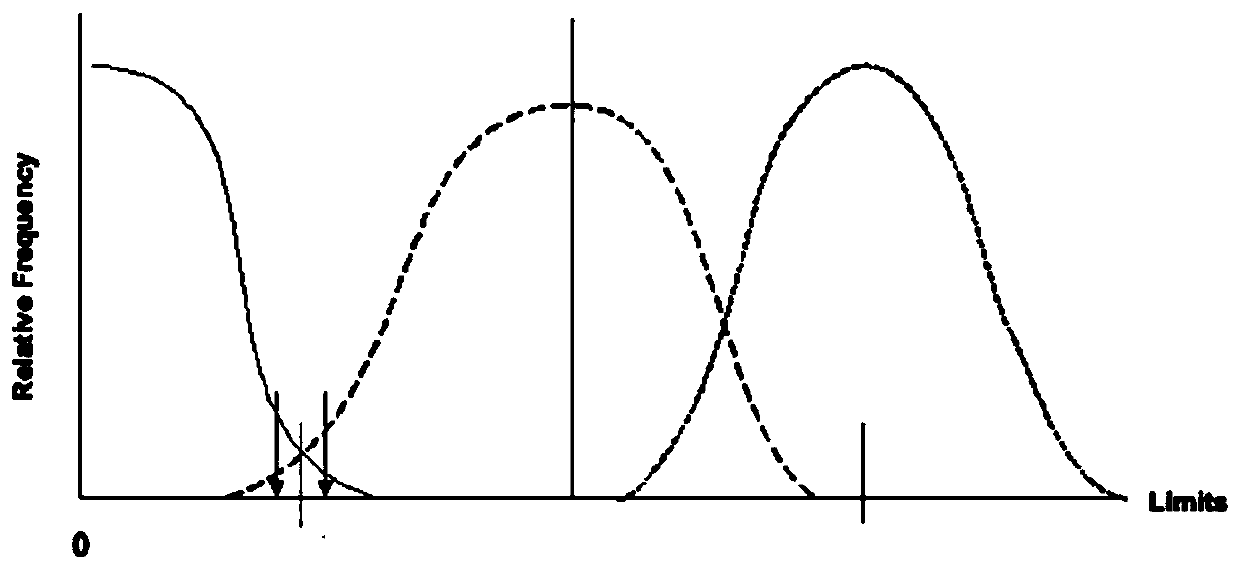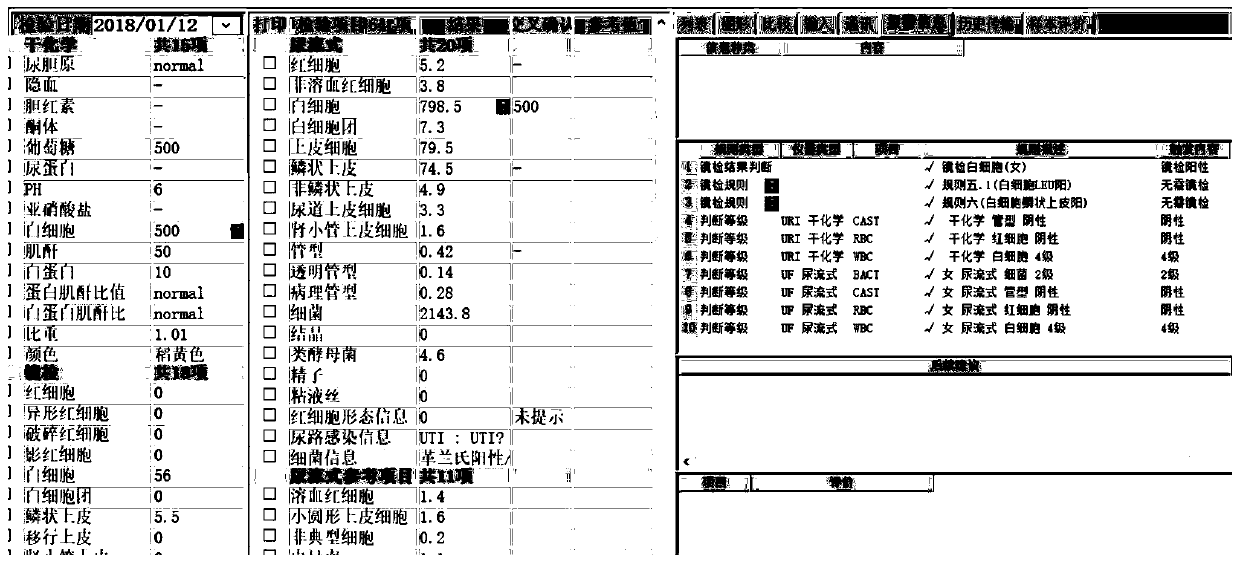An automatic verification system for urine routine testing in clinical laboratories
A routine inspection and laboratory technology, applied in the field of medical inspection, can solve the problems of low utilization rate of automatic audit, failure to cover pre-analysis, failure to fully utilize the advantages of intelligent audit, etc.
- Summary
- Abstract
- Description
- Claims
- Application Information
AI Technical Summary
Problems solved by technology
Method used
Image
Examples
Embodiment 1
[0074] A total of 895 urine samples from healthy individuals were collected from the physical examination center and used to establish the reference interval for the automated urine formed component analyzer. No urinary system-related diseases were found in all healthy persons, and no abnormalities were found in important tissues and organs such as the heart, liver, lung, and brain. Physical examination items were normal. Among them, there were 511 males and 384 females, aged 20 to 83 years, with a median age of 43 years. After calculation by software, the normal adult reference interval is obtained.
[0075] Table 1 Reference intervals for the detection items of UF5000 urine formed component analyzer
[0076]
[0077]
[0078] Urine testing, especially dry chemical testing, has unavoidable interference, so combined urine analysis techniques complement each other, and finally check and report under a microscope, which is currently a widely recognized and used process. ...
Embodiment 2
[0115] for example:
[0116] 1. A patient, female; the urine routine examination results are as follows: image 3 :
[0117] Among them, since the UF white blood cell is 798.5 / ul (level 3), and the dry chemical LEU500 (3+), the rule of "WBC≥1 level & LEU≥1+ & the difference between the two levels <2 level" in the re-examination rules is triggered, then it can be automatically Audit report issued. If according to the previous working method, the specimen needs manual microscopic examination, and can only be issued after manual review.
[0118] 2. For a patient, the urine routine examination results are as follows: Figure 4 :
[0119] Among them, because the patient’s UF red blood cell is 31 / ul (RBC±, grade 0); the dry chemical BLD is 0.03 (±, grade 0), and the UF red blood cell morphology information alarm is inhomogeneous; trigger “RBC=0 grade&dry chemistry= Grade 0 & (heterogeneous or mixed red blood cells)" requires manual microscopic examination before reviewing and i...
Embodiment 3
[0121] From January 2018 to March 2018, a total of 2,803 urine samples were collected from patients at the Peking Union Medical College Hospital of the Chinese Academy of Medical Sciences (Hospital A), the Cancer Hospital of the Chinese Academy of Medical Sciences (Hospital B) and the Guang’anmen Hospital of the Chinese Academy of Chinese Medical Sciences (Hospital C). For the screening and establishment of re-examination rules and review rules, covering multiple clinical departments of nephrology, urology, tumor, traditional Chinese medicine, obstetrics and gynecology, blood, endocrinology, geriatrics, ophthalmology, ear, nose and throat, oral cavity, skin, etc., aged 5 to 97 , with a median age of 55. Urine retention standard is based on the 4th edition of "Clinical Laboratory Operation Procedures" [5] 30 to 50 urine samples were selected from each of the 3 hospitals within 2 hours after submission [6] , each specimen is required to be 10ml. The Sysmex UN2000 urinalysis as...
PUM
 Login to View More
Login to View More Abstract
Description
Claims
Application Information
 Login to View More
Login to View More - R&D
- Intellectual Property
- Life Sciences
- Materials
- Tech Scout
- Unparalleled Data Quality
- Higher Quality Content
- 60% Fewer Hallucinations
Browse by: Latest US Patents, China's latest patents, Technical Efficacy Thesaurus, Application Domain, Technology Topic, Popular Technical Reports.
© 2025 PatSnap. All rights reserved.Legal|Privacy policy|Modern Slavery Act Transparency Statement|Sitemap|About US| Contact US: help@patsnap.com



